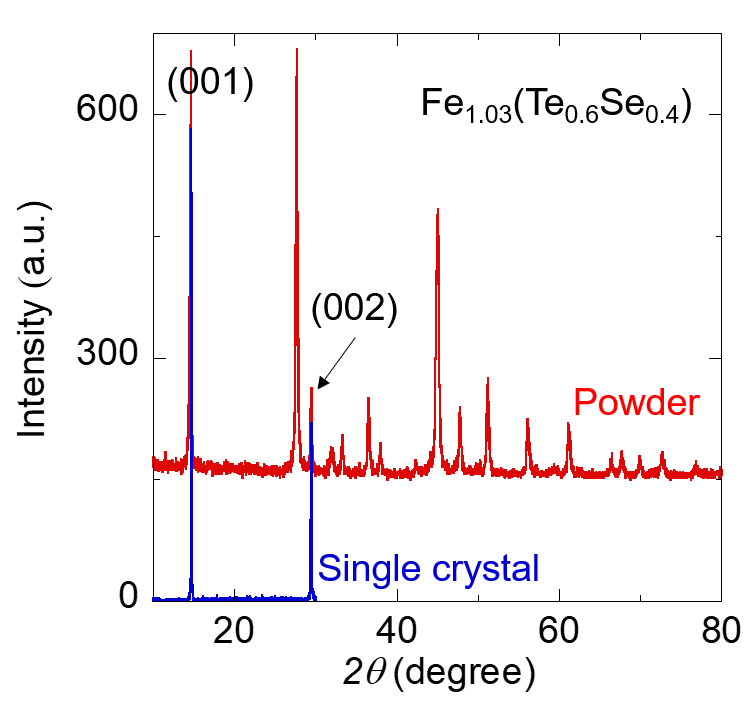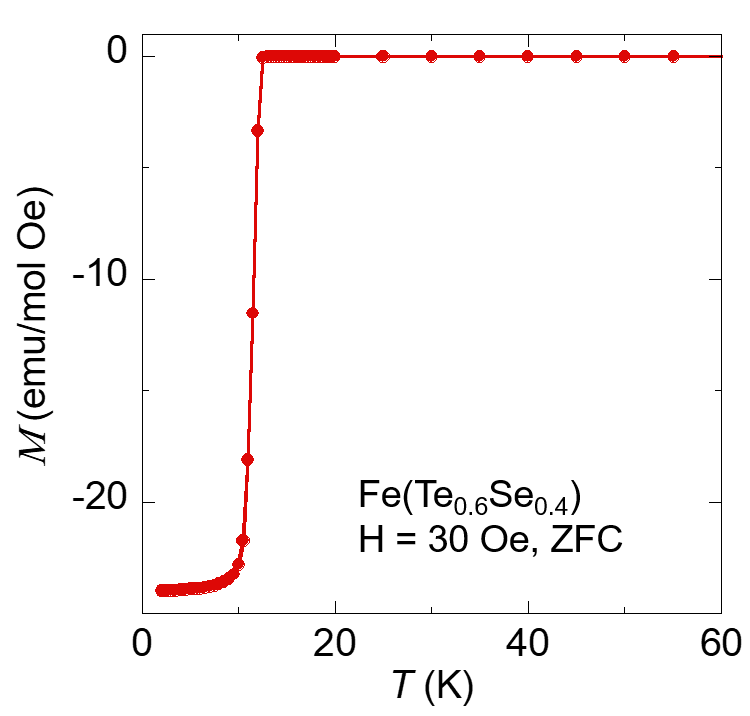Fe(Te1-xSex), optimal doping for superconductivity (x~0.4-0.5)
(For FeSe, i.e., x = 1, see this page 🔗.)
Structure

Crystal Image

Crystal Structure
The real samples usually have excess Fe at the interstitial sites of the Te/Se layer, forming Fe1+y(Te1-xSex) composition. Such excess affects the magnetic and electronic transport properties.

XRD
Single-crystal and power spectrum for Fe1.03(Te0.6Se0.4)

XRD
Single-crystal spectrum (00L reflections) for Fe1.03(Te1-xSex)
Structural property summary
- Single crystal form: silver color, metallic luster, square/rectangle facets
- Structure type: Layered, P4/nmm
- Air sensitivity: stable
- Exfoliation: very easy
Transport Properties

Resistivity- Temperature dependence
- The transition temperature and metallicity in the normal state are greatly affected by sample quality, amount of excess Fe, and Se:Te ratio.
- Excess Fe induces (pi, 0) magnetic fluctuations, suppresses transition temperature, and suppresses metallicity in the normal state.
- For minimized excess Fe (< 2%), the properties (transport, magnetization, and specific heat) are similar for samples with Se:Te ratio in the range of 0.35:0.65 – 0.5:0.5
Magnetic Properties

Magnetization- Temperature dependence
Meissner effect
Specific Heat

Specific Heat (C vs T)
The transition temperature and specific jump are greatly affected by sample quality and Se:Te ratio